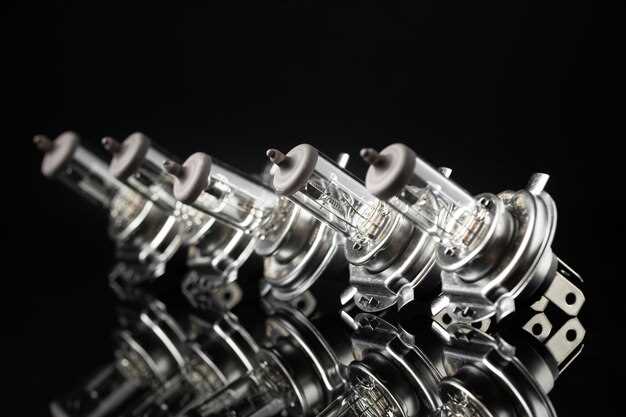
When it comes to enhancing the performance of your vehicle, choosing the right exhaust system is crucial. A high-quality racing exhaust not only improves the engine’s efficiency but also adds that exhilarating sound that every car enthusiast craves. Engineered to maximize airflow, these systems can significantly boost horsepower and torque, transforming your driving experience into something truly exhilarating.
In the world of automotive upgrades, exhaust systems stand out as one of the most impactful modifications you can make. By replacing the factory-installed component with a performance-oriented exhaust, drivers can expect to see improvements in acceleration and overall responsiveness. The right setup will reduce backpressure, allowing the engine to breathe easier and perform at its best.
Moreover, the aesthetic appeal of a racing exhaust cannot be overlooked. The aggressive tone and distinctive rumble produced by a quality system not only enhance the sound profile of your vehicle but also turn heads on the street or track. In this article, we will explore some of the best racing exhaust systems available, focusing on their sound quality, performance benefits, and what makes them stand out in a crowded market.
Choosing the Right Material for Your Exhaust System

When it comes to upgrading your exhaust system, selecting the appropriate material is crucial for achieving both sound and performance enhancements. The most common materials used in exhaust systems include stainless steel, aluminized steel, and titanium, each offering distinct advantages and disadvantages.
Stainless steel is the most popular choice due to its resistance to corrosion and durability. It can withstand high temperatures and is less likely to rust compared to other materials. Additionally, stainless steel exhaust systems often produce a more refined sound, enhancing the overall driving experience. However, this material can be more expensive upfront.
Aluminized steel is an economical alternative that provides adequate performance for everyday driving. While it offers reasonable rust resistance, it is not as durable as stainless steel and may require replacement sooner due to corrosion. Aluminized exhaust systems typically produce a slightly harsher sound compared to their stainless counterparts, which may or may not be desirable based on personal preferences.
Titanium is an advanced material used predominantly in high-performance applications. It is lightweight yet extremely strong, making it an ideal choice for those seeking to reduce vehicle weight while enhancing sound and power. Titanium exhaust systems are generally the most expensive option but offer exceptional performance benefits and a unique, aggressive sound profile.
In addition to material types, consider the thickness and quality of construction, as these factors also contribute to the performance and longevity of the exhaust system. Ultimately, your choice should align with your specific goals, whether it be for daily driving, racing, or a combination of both. Understanding the characteristics of each material will aid in making an informed decision that meets your sound and power needs.
Understanding Noise Levels and Sound Quality in Racing Exhausts

When selecting a racing exhaust system, one of the most critical considerations is the balance between noise levels and sound quality. Racing exhausts are designed to enhance vehicle performance, but they also produce varying levels of noise that can significantly impact the driving experience.
Noise Levels are typically measured in decibels (dB), and racing exhausts can vary widely in this aspect. Some systems prioritize performance over noise reduction, resulting in a louder output that may exceed legal limits for street use. For track applications, however, higher noise levels are often acceptable and even preferred, as they signify a more aggressive engine sound and better flow characteristics.
It’s essential to understand that increased noise is often accompanied by an increase in engine performance. Enhanced exhaust flow can lead to improved horsepower and torque. However, potential buyers should be aware of their local regulations regarding noise limits, especially if the vehicle is intended for public roads.
Sound Quality refers to the character and tone of the exhaust note. A high-quality racing exhaust should produce a deep, throaty growl rather than a harsh, abrasive noise. The materials used in the construction of the exhaust, such as stainless steel or titanium, can greatly influence the sound produced. For instance, a titanium exhaust tends to be lighter and can provide a sharper tone, while a stainless-steel system may offer a fuller and more robust sound.
Moreover, the design elements of the exhaust, including the diameter of the piping, the configuration of mufflers, and the presence of resonators, all contribute to the overall acoustic profile. A well-designed exhaust system will enhance engine sound without being overwhelming, allowing for a pleasant auditory experience while racing.
In conclusion, understanding noise levels and sound quality is crucial when choosing a racing exhaust. Evaluating personal preferences, local regulations, and the intended use of the vehicle will guide enthusiasts toward the right system that enhances both performance and auditory pleasure.
Key Performance Features to Look for in Tuning Exhausts
When selecting an exhaust system for tuning, there are several key performance features that can significantly enhance both sound and power output. Firstly, consider the diameter of the exhaust pipes. A larger diameter allows for improved exhaust flow, reducing back pressure and enabling the engine to breathe more freely, which can lead to increased horsepower and torque.
Next, examine the materials used in the construction of the exhaust. Stainless steel and titanium are popular choices due to their durability and resistance to corrosion. These materials not only contribute to a longer lifespan but also help in weight reduction, which can improve overall vehicle performance.
Another critical factor is the design of the exhaust system, including the configuration of the headers, mid-pipes, and mufflers. Performance-oriented designs often incorporate equal-length headers that help maintain consistent exhaust flow across cylinders, optimizing engine performance. Additionally, the use of high-performance mufflers can provide a more aggressive sound while minimizing restrictions on exhaust flow.
Look for exhaust systems that offer adjustable components. This feature allows tuners to modify the system to achieve the desired sound level and performance. Adjustable mufflers or resonators can help tailor the exhaust note, making it possible to balance noise and performance according to personal preference.
Finally, check for compatibility with your specific vehicle model and engine configuration. A well-fitted exhaust system is essential for optimal performance. Systems designed for specific vehicle applications typically undergo extensive testing, ensuring they deliver the best combination of sound and power output for your car.













